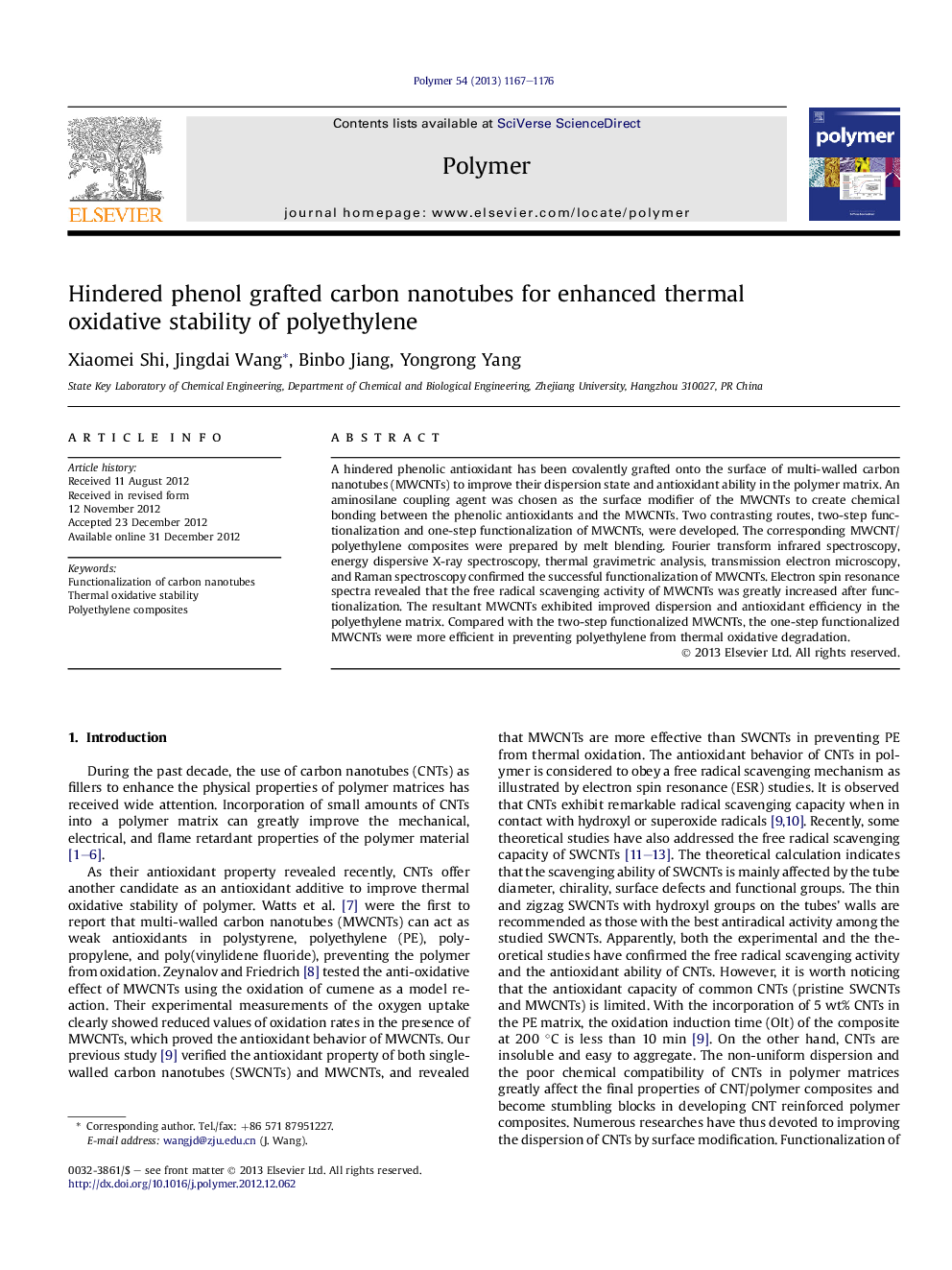| Article ID | Journal | Published Year | Pages | File Type |
|---|---|---|---|---|
| 5182200 | Polymer | 2013 | 10 Pages |
A hindered phenolic antioxidant has been covalently grafted onto the surface of multi-walled carbon nanotubes (MWCNTs) to improve their dispersion state and antioxidant ability in the polymer matrix. An aminosilane coupling agent was chosen as the surface modifier of the MWCNTs to create chemical bonding between the phenolic antioxidants and the MWCNTs. Two contrasting routes, two-step functionalization and one-step functionalization of MWCNTs, were developed. The corresponding MWCNT/polyethylene composites were prepared by melt blending. Fourier transform infrared spectroscopy, energy dispersive X-ray spectroscopy, thermal gravimetric analysis, transmission electron microscopy, and Raman spectroscopy confirmed the successful functionalization of MWCNTs. Electron spin resonance spectra revealed that the free radical scavenging activity of MWCNTs was greatly increased after functionalization. The resultant MWCNTs exhibited improved dispersion and antioxidant efficiency in the polyethylene matrix. Compared with the two-step functionalized MWCNTs, the one-step functionalized MWCNTs were more efficient in preventing polyethylene from thermal oxidative degradation.
Graphical abstractDownload full-size image
